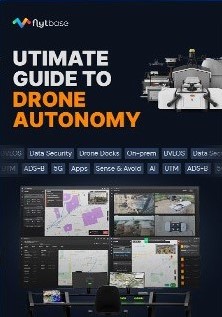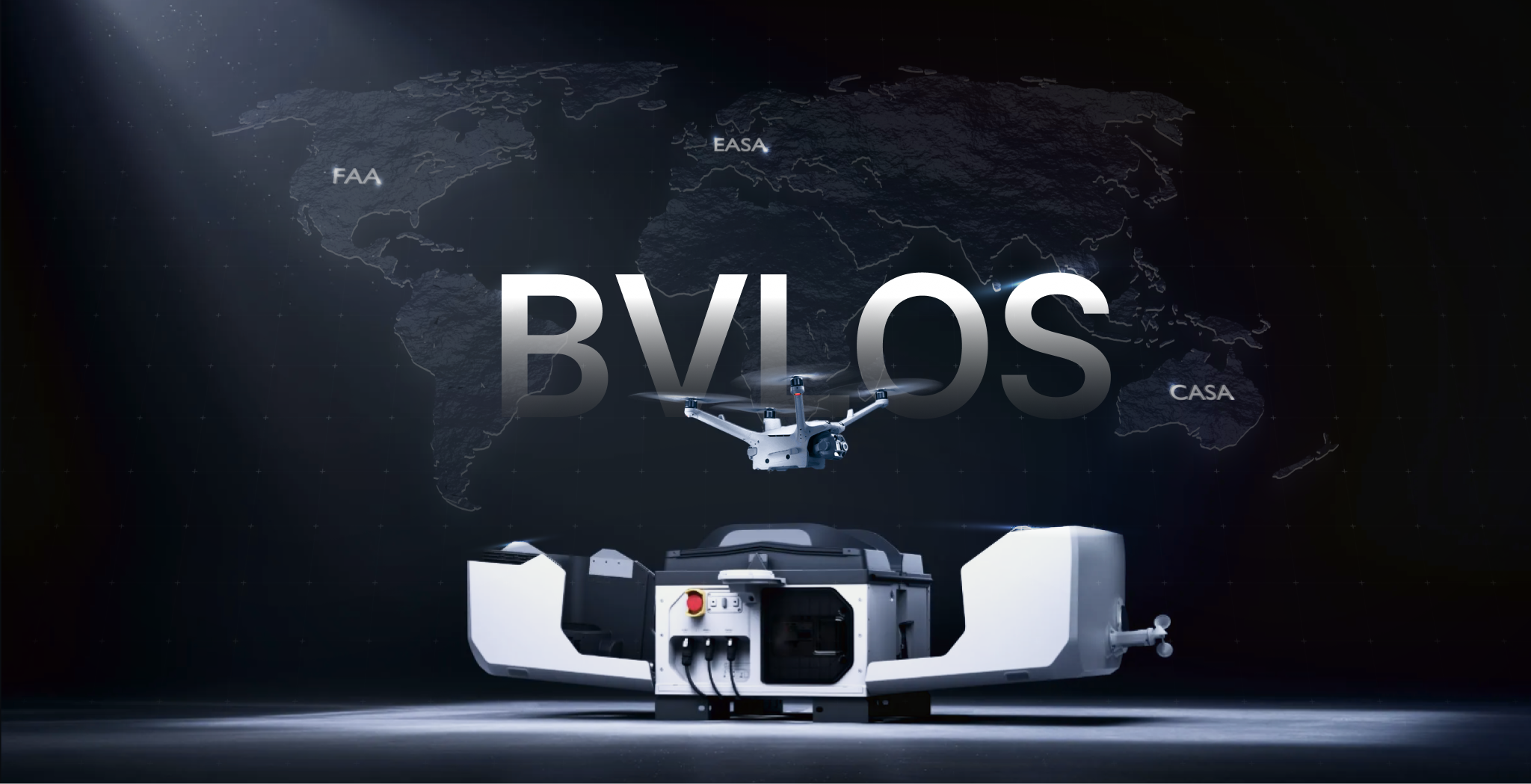Drones provide unique capabilities that are leveraged by emergency service providers all over the world. They are already saving thousands of lives through participation in various public emergency and safety operations.
The 2020 COVID pandemic has accelerated the adoption of drones for public safety. When humanity was facing a worldwide lockdown, authorities in India used drones to monitor cities and enforce social distancing norms. Read the full case study on how an Indian startup helped authorities in the state of Gujarat to use drones via the country’s first drone command center.
Among the numerous public safety use cases where drones play a vital role, one stands out for its direct benefits and widespread attention: search and rescue operations (SAR). In this blog post, we’ll dive deeper into the subject.
Table of Contents:
- What are Search and Rescue Drone Operations?
- Types of Search and Rescue Operations
- Advantages of Search and Rescue Drones
- Enhancing SAR Operations with Drone Dock Systems
- Popular Search and Rescue Drones
- How FlytBase Enhances the Capabilities of Drones (UAVs) in Search and Rescue
What are Search and Rescue Drone Operations?
Search and rescue aka SAR is a subset of public safety operations and involves activities revolving around finding missing people. It generally comes under the purview of the fire department in most countries. In the US, private SAR teams also exist; for example, Texas EquuSearch is a not for profit organization dedicated to SAR operations.
In 2019, a hiker got trapped on a ledge somewhere in the Snowy Canyon State Park, Utah. The mountain rescue operation happened at night using drones. SAR drones were used as a light source by the rescue team to locate the hiker. Similar to this, there are thousands of stories of how drones helped save precious lives.
Types of Search and Rescue Operations:
Search and Rescue (SAR) missions are diverse and are generally categorized based on the type of terrain or the specific circumstances where the search is being conducted. Here are a few different types of SAR operations:
- Air-sea rescue (ASR): Also known as sea-air rescue, this is a coordinated SAR of the survivors of emergency water landings as well as people who have survived the loss of their seagoing vessel. It can involve resources including seaplanes, helicopters, submarines, rescue boats, and ships. This type of rescue is carried out by both military and civilian units. Innovations like the helicopter provided hover capabilities that revolutionized air-sea rescue.
- Ground search and rescue: This involves the search for persons who are lost or in distress on land or inland waterways. It covers searches for people who have gone missing due to a variety of reasons, from domestic abuse, mental illness, accidents, to getting lost or even abduction.
The primary agency for these types of searches in some countries is the police, though voluntary search and rescue teams may assist. Specific environmental risks may warrant the need for small specialist teams for operations such as swift water rescue, flood response, technical rope rescue, confined space rescue, over-snow rescue, and thin ice rescue.
- Mountain rescue: This type of SAR operation specifically occurs in rugged and mountainous terrain.
- Urban search and rescue (US&R or USAR): Also known as Heavy Urban Search and Rescue (HUSAR), this operation involves the location and rescue of persons from collapsed buildings or other urban and industrial entrapments. It requires specialized multi-disciplinary teams due to the complex nature of the work.
- Combat search and rescue: Conducted on the battlefield to rescue distressed individuals, typically in conflict zones.

Advantages of Search and Rescue Drones
Search and rescue operations are fairly difficult and unpredictable, unlike other public safety operations. These two factors play an important role in the overall outcome of a SAR mission:
- Time: In most SAR missions, the missing person is trapped in a life-threatening situation, where the person has less time. So it becomes important for rescuers to find the person at the earliest.
- Terrain: SAR missions outside human establishments can face challenging terrain in the form of a snowy mountain, rainforest, etc. which might slow the entire operation.
Get Your Free Drone Autonomy Guide Today!

SAR operations offer multiple advantages that make them an invaluable asset in emergency situations. Here are the main benefits:
Speed of Response: Drones can reach a location a lot faster than ground-based vehicles, thanks to their ability to fly over traffic and other obstructions. They are also capable of reaching inaccessible places, such as remote or hazardous areas.
Situational Awareness: By providing rapid, cheap access to aerial data of a large area, drones allow responders to map the entire search zone and pinpoint possible places where the missing person might be trapped. Drones can provide real-time visual information and data, reducing the time and the number of searchers required to locate and rescue an individual.
Detection and Identification: Drones can carry different sensors, including thermal cameras, which are extensively used in search and rescue missions. These sensors can identify ground objects and humans by detecting their heat signatures, making them easy to spot, especially in the dark or dense areas. Drones can also carry high-resolution cameras capable of capturing still images that provide valuable information to people on the ground.
Communication: Drones equipped with a loudspeaker can broadcast a message repeatedly, making the missing person aware that a search is underway. This feature can also facilitate direct communication with victims or ground crews.
Illumination: Drones can carry spotlights to light up target areas, providing additional visibility during night operations.
In sum, the versatility, agility, and advanced technology of SAR drones significantly enhance the effectiveness and safety of rescue operations.
Enhancing SAR Operations with Drone Dock Systems
Drone docks are automated stations that facilitate the deployment, charging, data transfer, and housing of uncrewed aerial vehicles (UAVs), or drones. They serve as launch and landing pad, enabling drones to perform tasks such as surveillance, delivery, or search and rescue operations continuously. These smart docks considerably extend the operational capabilities of drones, allowing them to function autonomously across a wide range of applications.

Drone docks, when paired with the right software platforms, revolutionize these operations. Advanced software allows mission planning, real-time data analysis, and communication between SAR teams and drones. This significantly boosts the efficiency and effectiveness of SAR efforts, aiding in rapid response and comprehensive search coverage.
Some popular drone docking stations for Search and Rescue operations include:
Popular Search and Rescue Drones
A thermal camera is a pivotal part of any aerial search and rescue mission. Drones that can carry a thermal sensor and can fly for a considerable amount of time are preferred for such operations. Here are some popular models from DJI that are extensively used for public safety operations.
How FlytBase Enhances the Capabilities of Drones (UAVs) in Search and Rescue Missions
Search and Rescue (SAR) missions are often challenging, requiring a high level of coordination, precise data, and rapid response. FlytBase is a drone autonomy software platform that enables autonomous drone dock operations to be executed remotely from a comma nd center without the need for an on-site presence. The following are some of the primary perks of using FlytBase:
Command & Control Center
Drone video feeds can be critical for effective command and control during SAR missions. Operators can view live HD video feeds from their drone fleet via the FlytBase dashboard. Furthermore, FlytBase's APIs enable this live feed to be ingested directly into the user's command center screens. This provides decision-makers with a real-time picture of the situation on the ground.

Real-time Thermal Video Feed
Real-time thermal video feed coming from the drone is incredibly useful in low visibility situations or densely vegetated areas where visual search may be limited. The real-time thermal video feed can help rescue teams pinpoint the location of lost individuals faster, especially during night operations or in challenging weather conditions.
Human Detection Using AI
One of the preeminent features of FlytBase is its use of AI for human detection. This powerful technology employs complex algorithms that can identify human forms in the drone's video feed. This increases the efficiency of the search, reduces false alarms, and allows for quicker mobilization of rescue efforts once a target is located.

Workflow Integration
FlytBase’s workflow module allows seamless integration with the tools and sensors used by SAR teams. This means the drone can be automatically deployed when an alert is raised in their CAD systems. For instance, when a sensor detects unusual activity or when a distress signal is received, the drone can be automatically and quickly sent to the scene. This integration allows for quick detection and real-time situational awareness, which is critical in emergency response scenarios.
.png)
Case Study: Drone Dock for Avalanche Response in Italy (Dronebase)
Emergency response teams confront significant challenges in hilly terrains and expansive valleys, especially during natural disasters like avalanches. A tragic incident on July 3rd, where an avalanche claimed 11 lives on the "Queen of the Dolomites," aka Marmolada mountain peak in northeastern Italy, emphasized the need for enhanced emergency response techniques.

The Challenge
The major challenges faced by the emergency response teams included the need for:
1. Visual aids in hard-to-access locations.
2. Rapid response in the event of natural calamities.
3. An efficient method for searching for missing people in and around woods and forests.
The region's difficult terrain and the remoteness of many areas made traditional methods of emergency response insufficient and often ineffective.
The Solution
To address these challenges, the rescue firefighters utilized FlytBase-powered autonomous drone docking stations in mountainous regions, aiming to prevent similar tragedies in remote and inaccessible areas. FlytBase partner, DroneBase, assisted rescue firefighters with operations and training and in getting a green-light for operations from ENAC - The Italian Civil Aviation Authority.
The implementation of the FlytBase powered drone dock had several key impacts:
- Enhanced Visual Reference: The drone provided an aerial perspective that significantly improved the response team's situational awareness. The live video feed from the drone provided a real-time overview of the area, making it easier for the response teams to assess the situation and plan their operations accordingly.
- Frequent and Repeatable Search Missions: The ability to carry out search missions at regular intervals provided an increased chance of locating missing individuals. Drones could be deployed regularly without risking personnel and could cover vast areas, including forests and other challenging terrains, much more quickly than ground-based searches.
- Increased Accessibility of Terrain: The drone was able to navigate areas that were previously hard to access due to the hilly terrain and valleys. This increased accessibility allowed for quicker responses to emergencies and more efficient searches for missing individuals.

The deployment of the drone dock proved to be a significant advancement in emergency response methods. This solution not only improved the efficiency and effectiveness of the response operations but also played a vital role in ensuring the safety of the emergency response teams by reducing the need for them to enter potentially dangerous areas.
As a result of this successful implementation, other regions with similar challenges are considering adopting similar solutions for their emergency response operations.
Read more: https://www.ilrestodelcarlino.it/rimini/cronaca/droni-riminesi-sulla-marmolada-1.7973777/amp
Summary
In conclusion, drones, and drone dock systems are redefining the way Search and Rescue operations are conducted. The unprecedented speed, accessibility, and data capabilities they offer make them a game-changer in emergency situations. SAR operations are becoming faster, safer, and more efficient through drone technologies, such as those provided by FlytBase.
From real-time visual and thermal feeds to AI-assisted human detection, these innovations are significantly enhancing the potential of rescue missions. The successful implementation of such technologies in Italy serves as a testament to the transformative power of drone technology in enhancing public safety and saving lives.
FAQ (Frequently Asked Questions)
Q: How are drones changing search and rescue?
A: Time is of the essence in a search and rescue mission. Drones allow SAR teams to scan a large area fast, which turns the odds in their favor for a timely rescue.
Q: Will fleets of drones be the future of search and rescue?
A: Yes! Drones have already become an important part of public safety operations, because of their capabilities. Search and rescue is a subset of public safety operations.
Q: Will drones be useful in avalanche search and rescue tasks?
A: Drones are already being used in avalanches for searching missing people. In the Czech Republic, there is a nationwide agency called the Mountain Rescue Service of the Czech Republic that actively participates in rescuing people trapped by an avalanche. They rely on a response system based on a network of drones.
Q: What are the benefits of drones in search and rescue?
A: Drones provide cheap and fast access to aerial data, which allows responders on the ground to scan a large area in less time. Thus increasing the odds of finding the missing person in time.
Q: What drones are best for search and rescue operations?
- DJI M300 RTK
- DJI M30T
- DJI Mavic 3 Enterprise
- DJI Mavic 2 Enterprise Advanced
- DJI Phantom 4 RTK

Baisali Ghosh



 English
English Spanish
Spanish


.webp)

.svg)
.webp)



.png)

.webp)